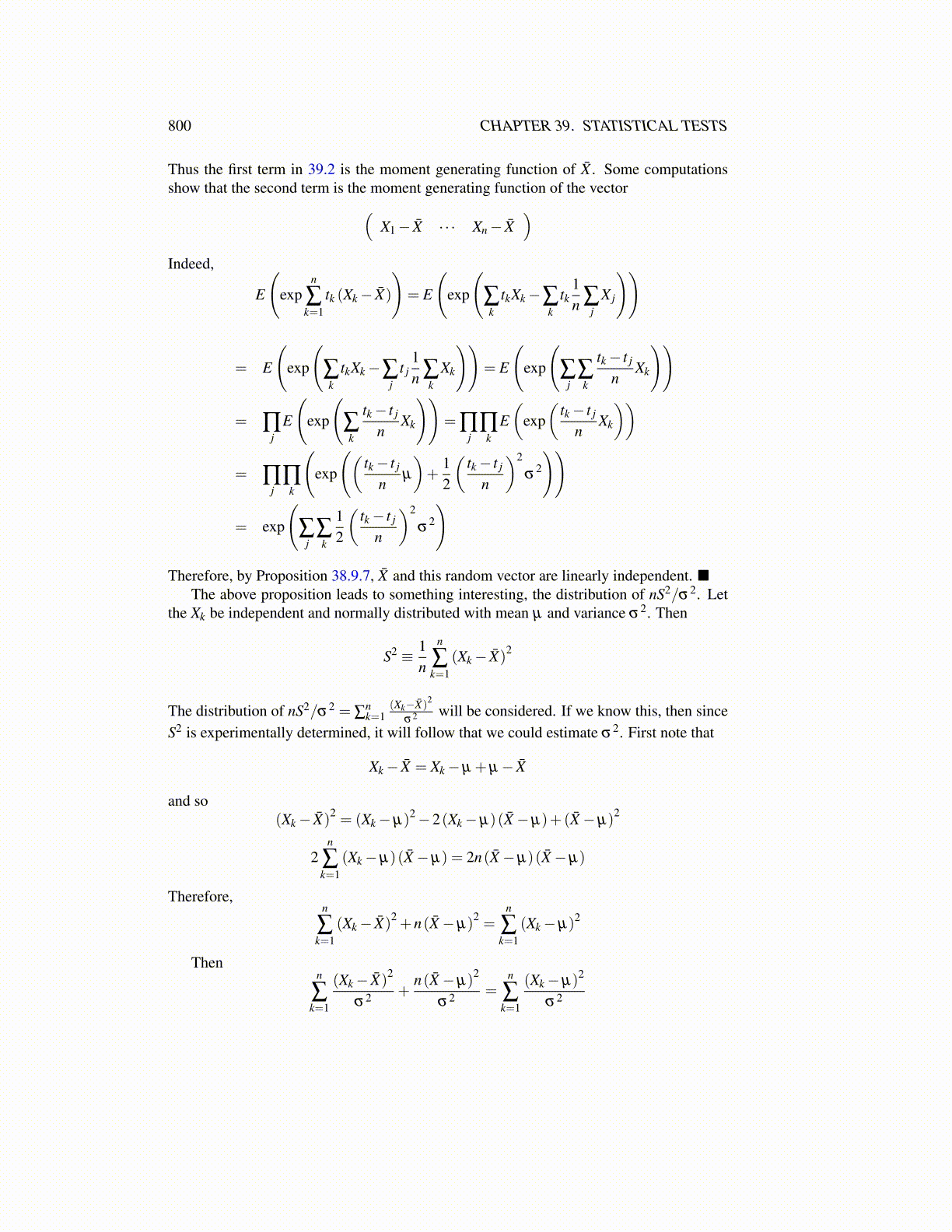
800 CHAPTER 39. STATISTICAL TESTS
Thus the first term in 39.2 is the moment generating function of X̄ . Some computationsshow that the second term is the moment generating function of the vector(
X1− X̄ · · · Xn− X̄)
Indeed,
E
(exp
n
∑k=1
tk (Xk− X̄)
)= E
(exp
(∑k
tkXk−∑k
tk1n ∑
jX j
))
= E
(exp
(∑k
tkXk−∑j
t j1n ∑
kXk
))= E
(exp
(∑
j∑k
tk− t j
nXk
))
= ∏j
E
(exp
(∑k
tk− t j
nXk
))= ∏
j∏
kE(
exp(
tk− t j
nXk
))
= ∏j
∏k
(exp
((tk− t j
nµ
)+
12
(tk− t j
n
)2
σ2
))
= exp
(∑
j∑k
12
(tk− t j
n
)2
σ2
)
Therefore, by Proposition 38.9.7, X̄ and this random vector are linearly independent. ■The above proposition leads to something interesting, the distribution of nS2/σ2. Let
the Xk be independent and normally distributed with mean µ and variance σ2. Then
S2 ≡ 1n
n
∑k=1
(Xk− X̄)2
The distribution of nS2/σ2 = ∑nk=1
(Xk−X̄)2
σ2 will be considered. If we know this, then sinceS2 is experimentally determined, it will follow that we could estimate σ2. First note that
Xk− X̄ = Xk−µ +µ− X̄
and so(Xk− X̄)
2= (Xk−µ)2−2(Xk−µ)(X̄−µ)+(X̄−µ)
2
2n
∑k=1
(Xk−µ)(X̄−µ) = 2n(X̄−µ)(X̄−µ)
Therefore,n
∑k=1
(Xk− X̄)2+n(X̄−µ)
2=
n
∑k=1
(Xk−µ)2
Thenn
∑k=1
(Xk− X̄)2
σ2 +n(X̄−µ)
2
σ2 =n
∑k=1
(Xk−µ)2
σ2